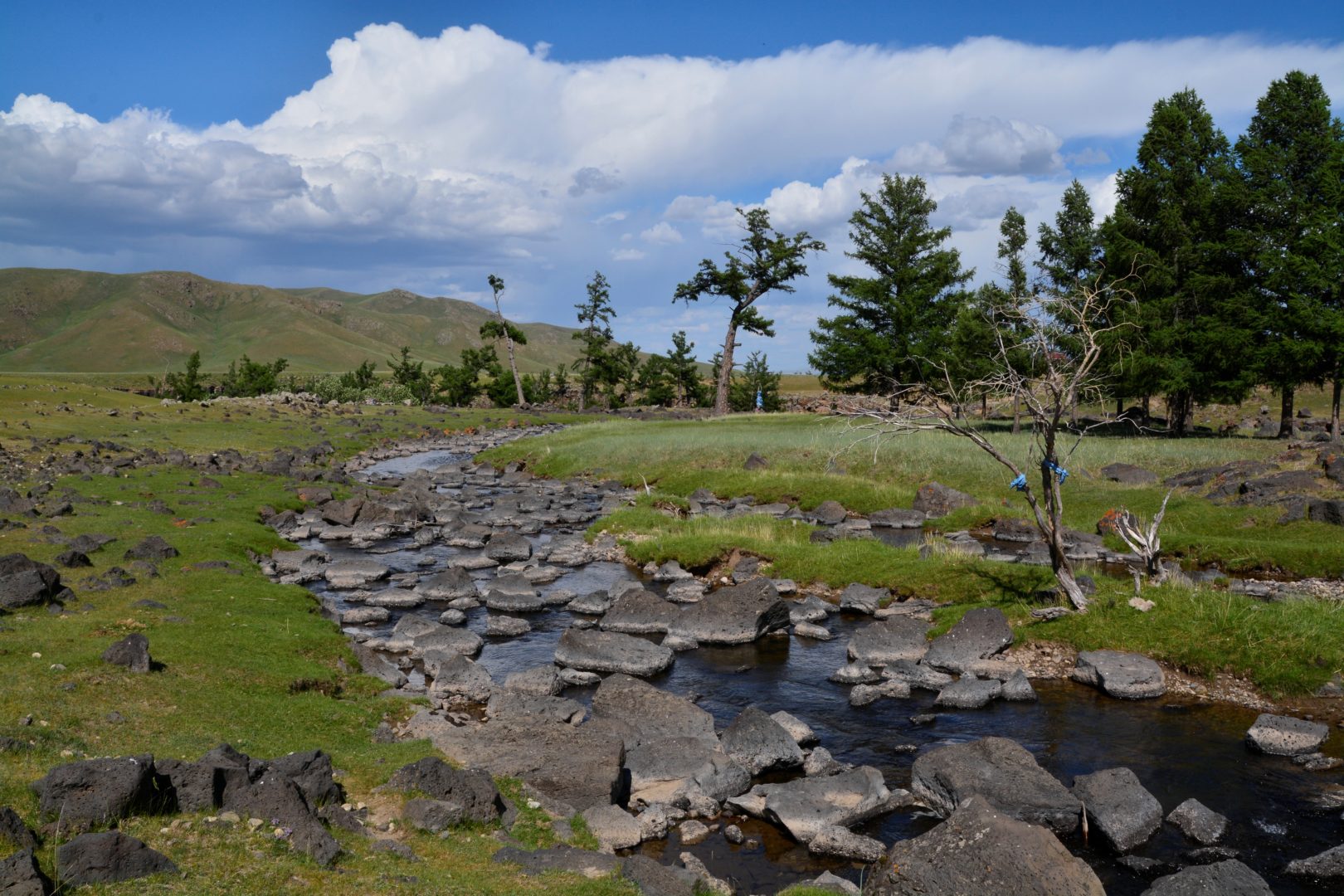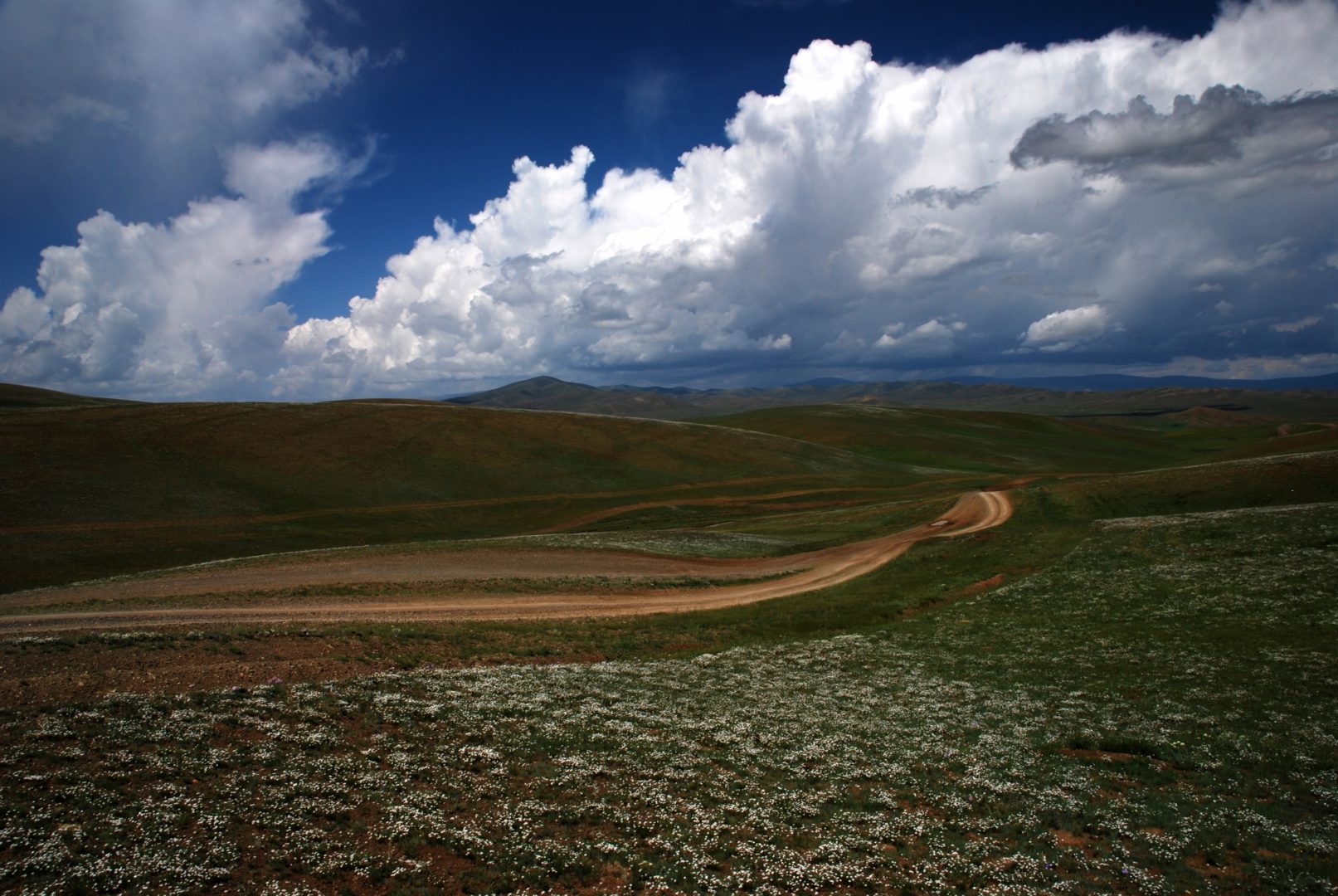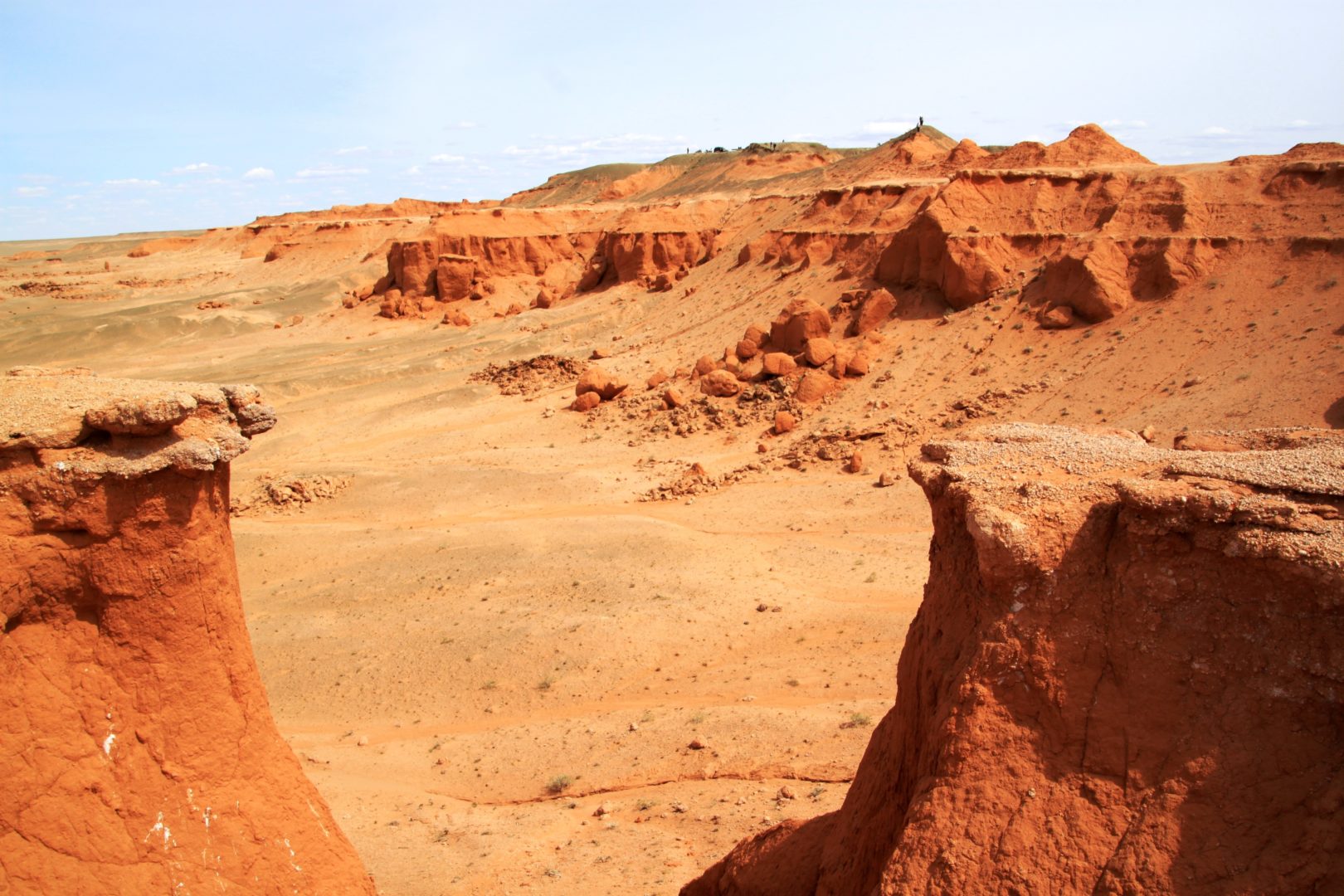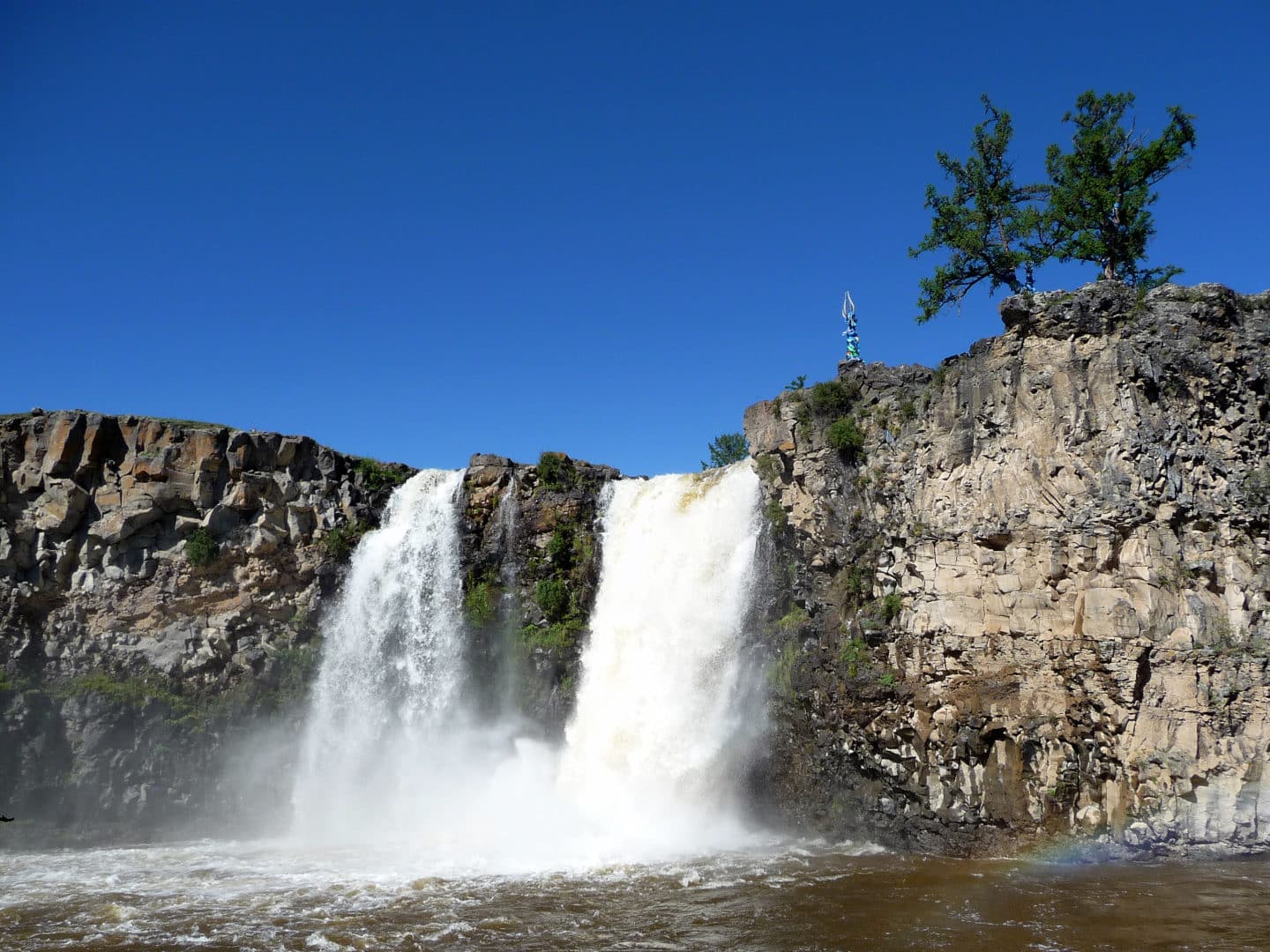Gobi and the steppe
Discover the highlights of the Gobi Desert and the Mongolian steppe. You won’t forget the breathtaking landscape and the heart-warming friendliness of the nomads. This tour also offers a higher level of comfort, as all the nights are spent in yurt camps. Enjoy hiking or riding in unspoilt natural surroundings. You will visit nomad families and get an insight into how they live.
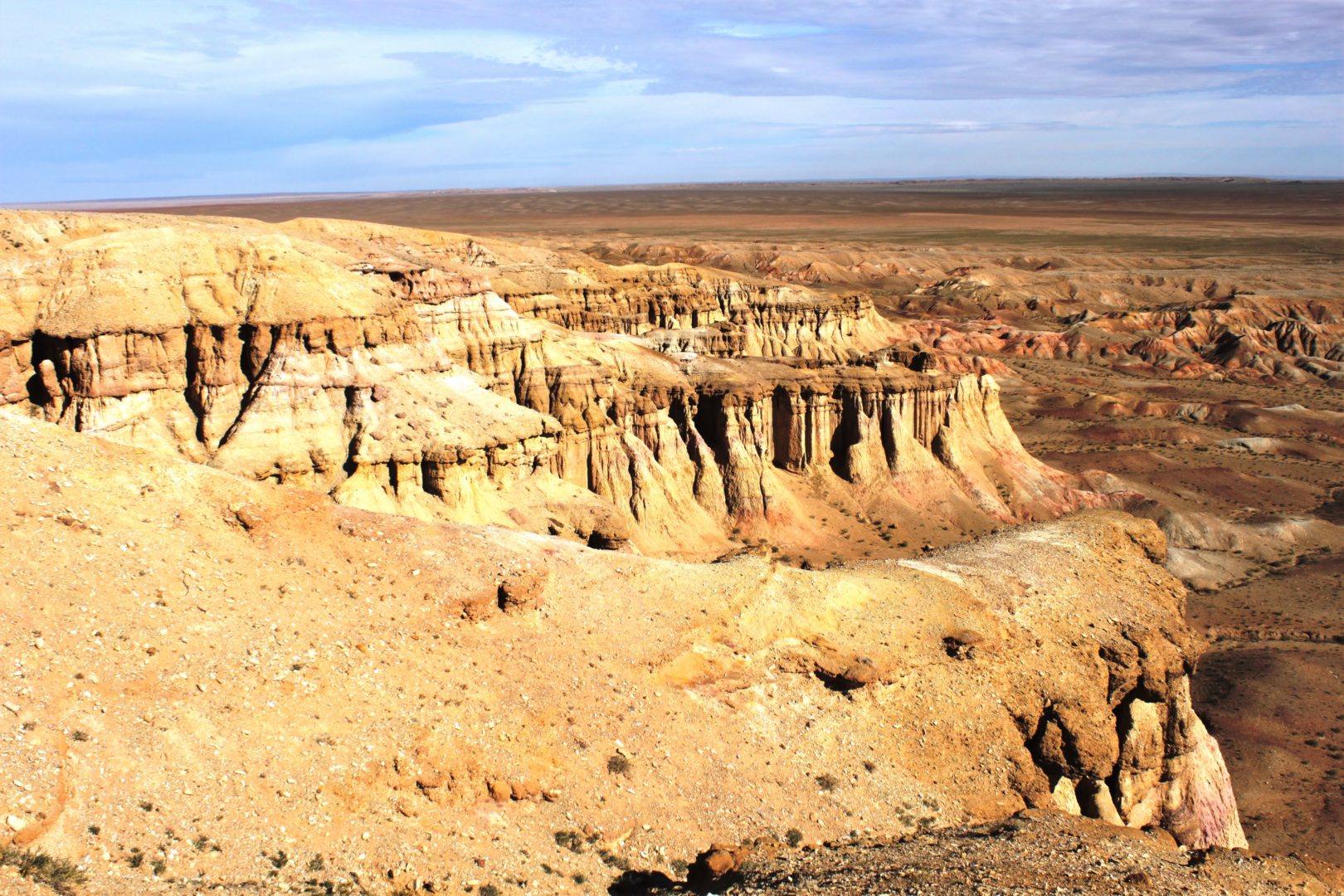
The highlights include:
Gobi Desert – Tsagaan Suvarga Canyon – Bayanzag (dinosaur findings) – Karakorum – Ongi Monastary ruins – Khongor sand dune – Ulaan waterfall – Przewalski’s wild horses – Erdene Zuu Monastery – Vulture Gorge – Approx. 3 visits to nomad families
Prices for individual tours on requested dates
Start date between 11/06 and 24/08:
2 persons: €2.650 per person without flights
3 persons: €2.450 per person without flights
4-5 persons: €2.250 per person without flights
Flight from ⁄ to Berlin or Frankfurt: From €800
Naadam surcharge: €300 per person in group
Start date up to 10/06 and from 25/08:
2 persons: €2.550 per person without flights
3 persons: €2.350 per person without flights
4-5 persons: €2.150 per person without flights
Flight from ⁄ to Berlin or Frankfurt: From €800
Single room & single yurt: €320
Price includes
- 1 night (double or twin room) in 3*hotel in Ulaanbaatar incl. breakfast
- 12 nights in yurt camps with shared sanitary facilities
- Full board during the entire stay in the countryside as per itinerary (B=breakfast, L=lunch, D=dinner)
- English-speaking tour guide
- Tranfers within Ulaanbaatar
- Minibus transport across country
- Nature reserve fees and entrance fees for sights as per itinerary
- Information brochure with tips for the trip
Price does not include
International flight, costs for additional meals and drinks, film and photo fees, tips, travel insurance, riding charges
Travel route
Day 1
You are picked up by our tour guide. On this day we visit the famous Gandan Monastery, the religious centre of modern-day Mongolia. You spend the night in the yurt camp on the edge of the capital.
Day 2
We are picked up by our driver at the hotel and set out southwards. En route to the Gobi we drive to our yurt camp, located in the Middle Gobi Aimag (an Aimag ist similar to a German state, but is usually significantly bigger). (B,L,D)
Day 3
Via the rocks of Baga Gazriin Chuluu we head in the direction of the capital of the Middle Gobi Aimag, Mandalgovi. Today we reach the Gobi Desert. South of Mandalgovi, in the vicinity of the Tsagaan Suvarga Canyon region, we spend the night and enjoy the silence of the desert. You can observe the beautiful play of colours as the sun is setting. (B,L,D)
Day 4
Via the desert Capital, Dalanzadgad, we drive to Gobi Gurvansaikhan National Park, where we’ll be spending two nights. We enter the Gobi Gurvansaikhan Mountains, whose highest peak is the eastern Saikhan mountain. It rises to 2,800 metres above the sea level. (B,L,D)
Day 5
Today we’re going hiking and visiting the Vulture Gorge (Jolin Am). This is a green mountain oasis in the rocky Gobi. The hike takes around 2 hours, depending on your wishes. In the evening we enjoy the sunset. (B,L,D)
Day 6
After breakfast we set out for the Khongor sand dune (Khongorin Els), a single enormous sand dune around 160 km long and up to 10 km wide. In the afternoon we explore the sand dune on foot and enjoy wide views of the Gobi. If you like you can try camel riding. (B,L,D)
Day 7
Today we’re talking a tour to Bayanzag, where dinosaurs have been found. During an expedition in the 1920s, researcher and adventurer Roy Chapman Andrews discovered dinosaur skeletons and eggs here. Today we can marvel at rock formations of red sandstone. A hike of around two hours takes us to a saxaul wood of the typical small trees of the Gobi Desert. (B,L,D)
Day 8
Our next destination is the ruins of the hidden Ongi Monastery (Ongin Khiid), situated on the Ongi River. At one time, over 500 Buddhist monks lived in the monastery, which was largely destroyed during the religious persecution of the 1930s. Many of the monks who lived here lost their lives. On a hike of around two hours we visit the monastery ruins and their surroundings. (B,L,D)
Day 9
Today we leave the Gobi Desert and enter the steppe landscape. Late in the afternoon we near the Orkhon River, the longest river in Mongolia at 1,124 kilometres. We spend the night in the picturesque Orkhon valley. (B,L,D)
Day 10
We stay in the Orkhon valley today. We visit the Ulaan waterfall, where the Ulaan Gol (Red River) flows into the Orkhon. The waterfall is around 20 metres high and 10 metres wide. You have the option to go hiking, horse riding and/or recuperate. (B,L,D)
Day 11
Today we’re off to the former capital of Genghis Khan’s Mongolian Empire: Karakorum (Kharkhorin). In the 14th century almost the entire city was destroyed by the Ming Dynasty. In Karakorum we visit the Karakorum Museum which contains the findings of the German-Mongolian excavations and representations of the different epochs og Mongolian history, from the Stone Age up to the Mongolian Empire. We also visit the famous Erdene Zuu Monastery, which was foundad in 1586 on the initiative of Abtei Sain Khan and is the oldest centre of yellow Buddhism in Mongolia. You have the option to join the Buddhist monks in prayer.
Day 12
After spending a night in Karakorum, we travel on to Hustai National Park, in whose surroundings a project for releasing Przewalski’s horses (takhi) into the wild has been running for several years. If we’re lucky we’ll get to see the wild horses. We spend our last evening in the steppe here. (B,L,D)
Day 13
After breakfast we drive to Ulaanbaatar. Our time in the steppe has come to an end, and this is our last chance to explore the capital. An evening concert introduces you to the delights of traditional Mongolian music. You hear the sound of the Mongolian horsedead fiddle and throat singing. (B)
Day 14
Return journey, organised individually. (B)


